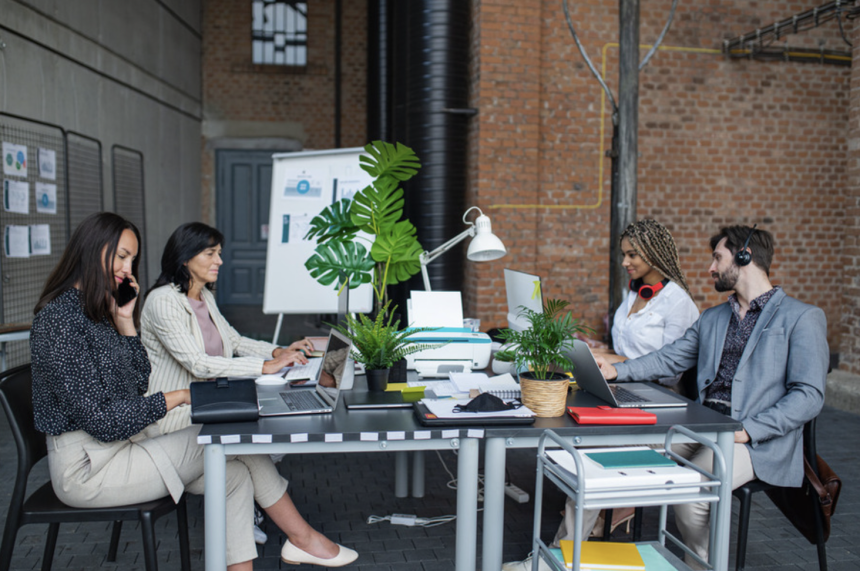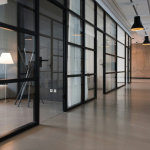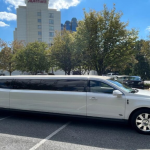The modern office is no longer just a place to work. It’s a hub for innovation, collaboration, and fostering a thriving company culture. Yet, many workplaces struggle to keep up with the evolving needs of today’s workforce. Revamping your office can make all the difference, improving productivity, morale, and even your bottom line.
Here’s how you can prioritize key areas to create a dynamic and successful workplace.
1. Upgrade to Ergonomic and Functional Furniture
Outdated furniture not only looks unappealing but also takes a toll on employee health and productivity. Investing in ergonomic furniture is a simple yet impactful way to modernize your office.
Ergonomic chairs, standing desks, and supportive accessories such as footrests or monitor stands can help reduce discomfort and fatigue. These upgrades improve posture, prevent work-related injuries, and make employees more comfortable throughout the day. Functional furniture also includes modular designs that can be easily reconfigured for various needs, making your space more versatile and efficient.
2. Embrace Technology for Efficiency
Technology drives modern workplaces. Without the right tools, teams can quickly become frustrated, and productivity can suffer.
Cloud-based platforms and project management tools streamline workflows, making it easier for employees to collaborate from anywhere. Automated lighting and climate control systems not only save energy but also create a more comfortable environment. Furthermore, equipping your meeting rooms with the latest audiovisual tools ensures seamless communication with clients and remote workers. Technology isn’t just about keeping up with the competition; it’s about giving your team the resources to excel.
3. Foster Collaboration with Flexible Spaces
Gone are the days of rigid office layouts. Modern workplaces thrive on flexibility and collaboration, and your office design should reflect that.
Open spaces encourage teamwork and brainstorming, while private rooms or pods cater to focused, individual tasks. Adding movable partitions or modular furniture allows you to adapt the office for different team sizes or events. Breakout areas with comfortable seating and writable walls create informal zones for creativity. By providing spaces that meet varied needs, you can support a diverse range of work styles and projects.
4. Enhance Lighting and Acoustics for Comfort
A well-lit and quiet office is essential for maintaining employee focus and satisfaction. Lighting and acoustics are two elements that often go overlooked but have a significant impact on daily operations.
Replace harsh, flickering lights with energy-efficient LEDs that mimic natural daylight. These not only reduce energy costs but also help improve mood and reduce eye strain. Similarly, soundproof panels, carpeting, or acoustic ceilings can minimize noise distractions, creating a more peaceful and productive atmosphere.
5. Incorporate Sustainable Practices
Sustainability is no longer optional; it’s a responsibility that modern businesses must take seriously. Greening your office can benefit the environment, lower operating costs, and boost employee morale.
Start by reducing paper usage through digital workflows and recycling programs. Upgrade to energy-efficient appliances and lighting, and consider renewable energy options like solar panels. When renovating, choose eco-friendly materials for furniture and finishes. These changes demonstrate a commitment to sustainability and create a workspace that aligns with modern values.
6. Improve Amenities to Enhance Employee Experience
Employees are more likely to thrive in a workplace that caters to their needs beyond just providing a desk. Thoughtfully designed amenities can make the office a more enjoyable place to be.
A well-stocked break room with comfortable furniture and healthy snacks shows employees they are valued. Fitness areas, quiet rooms, or even spaces for hobbies can promote well-being and reduce stress. High-quality restroom facilities are another often overlooked aspect. Incorporating durable and stylish bathroom stalls reflects attention to detail and ensures that even the most basic amenities meet modern standards. These small touches can significantly boost morale and create a positive impression for both employees and visitors.
7. Design for Flexibility and Adaptability
As work trends shift, offices must remain adaptable. Flexible workspaces allow businesses to respond to changing team sizes, projects, and even hybrid work models.
Movable walls, modular furniture, and multipurpose rooms make it easy to reconfigure the office layout as needed. For example, a collaborative area can transform into a training room or event space with minimal effort. This adaptability ensures your office remains functional and relevant, no matter what the future holds.
8. Reflect Company Culture Through Design
Your office design should tell the story of your brand. A cohesive look that integrates your company’s culture and values can inspire employees and impress clients.
For example, tech companies often lean toward minimalist, high-tech designs, while creative agencies may favor vibrant, quirky aesthetics. Incorporate your logo, brand colors, and mission statement into the decor to create a sense of identity. Thoughtful design elements not only make your office visually appealing but also help foster a sense of belonging among employees.
9. Prioritize Health and Safety Standards
In a post-pandemic world, health and safety are critical considerations for any office space. Employees need to feel secure and comfortable in their environment.
Improved air quality through ventilation systems and air purifiers is a good starting point. Touchless technology for doors, faucets, and other frequently used items reduces the spread of germs. Ensure your office is accessible by including ramps, elevators, and ergonomic workstations. Focusing on these elements shows that your company values employee well-being and inclusivity.
Transforming Your Office: The Path to Success
Revamping your office is an investment in your company’s future. By prioritizing ergonomic furniture, advanced technology, flexible layouts, and employee-focused amenities, you create a workplace that supports productivity, collaboration, and overall satisfaction.
The benefits of a dynamic and modern office extend beyond aesthetics—it enhances employee morale, attracts talent, and leaves a lasting impression on clients. Whether you’re making small updates or embarking on a full-scale renovation, these changes will position your business for long-term success. Start planning today to transform your office into a space that works as hard as your team does.
Lynn Martelli is an editor at Readability. She received her MFA in Creative Writing from Antioch University and has worked as an editor for over 10 years. Lynn has edited a wide variety of books, including fiction, non-fiction, memoirs, and more. In her free time, Lynn enjoys reading, writing, and spending time with her family and friends.















